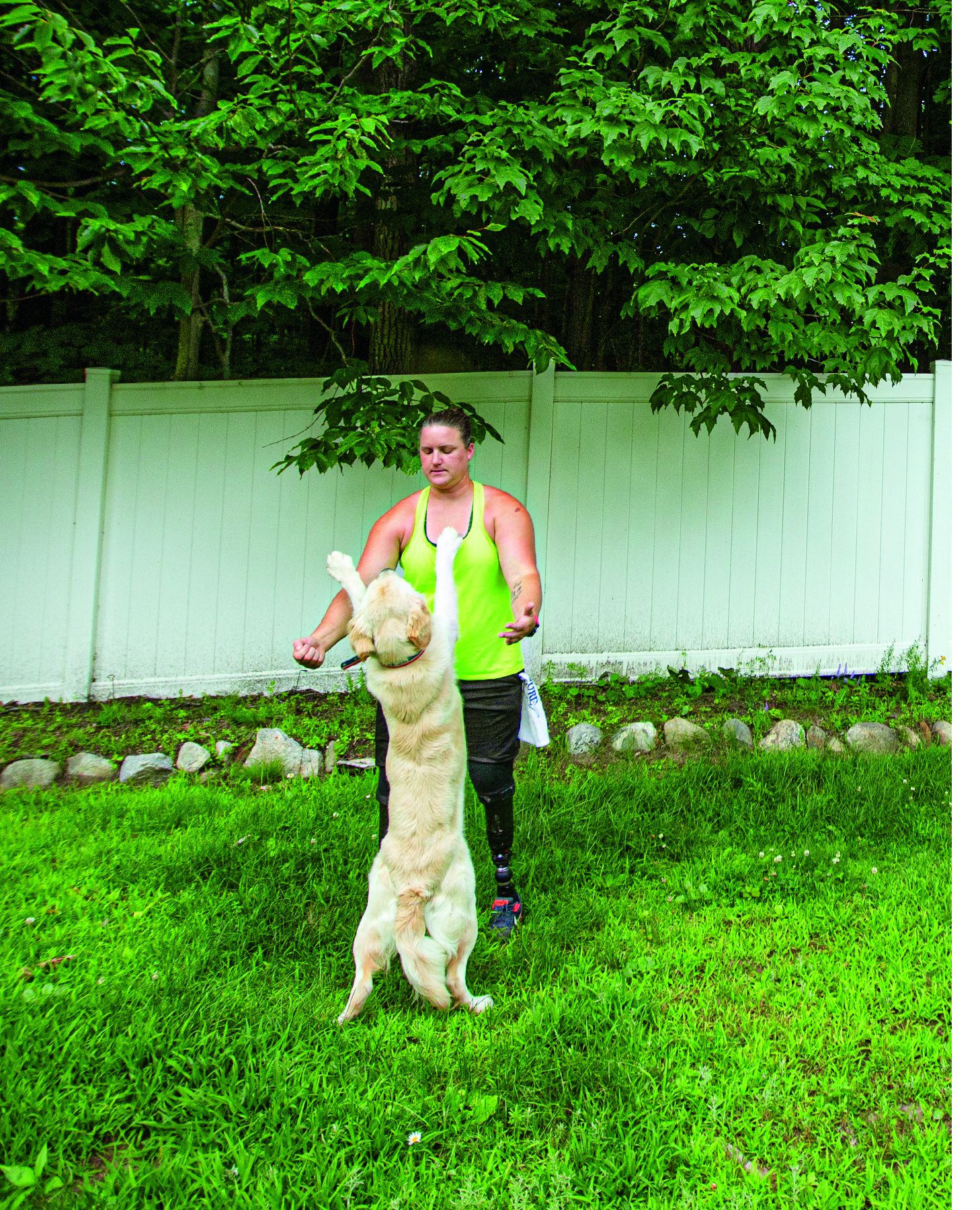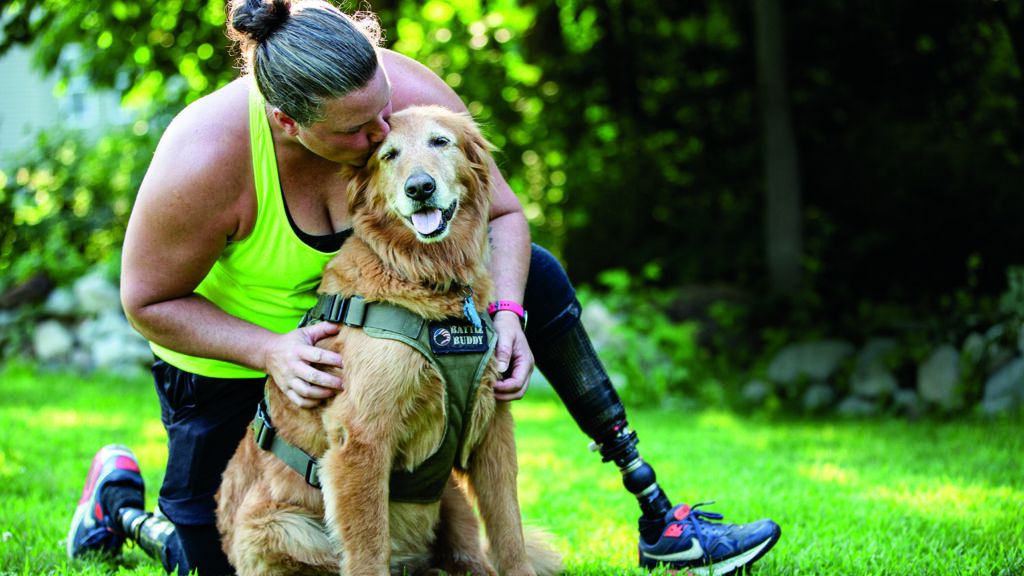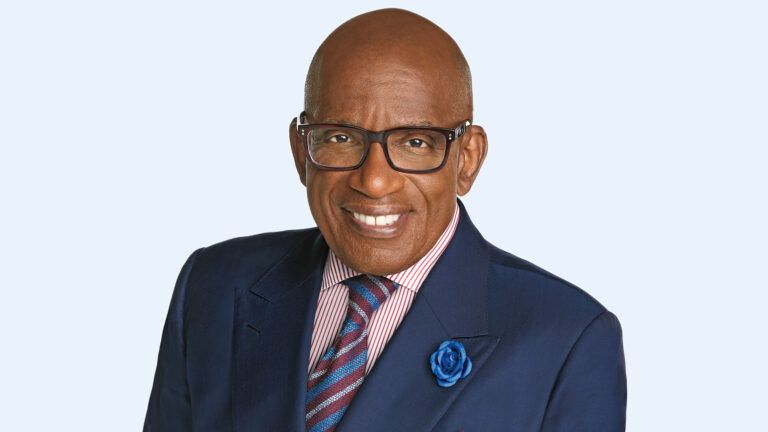“You’ll never…” I sat in an exam room at the VA hospital in Augusta, Maine, awaiting my team of doctors. I’d served in the Army as a sergeant in the military police. In July 2006 I’d been severely injured during a peacekeeping operation in Korea. Two fingers on my left hand gone. Skull fractures. Spinal cord injury. I had no feeling in my legs below the knees. I lost my memory, the hearing in my left ear and the ability to speak. The head injury led to frequent seizures.
For a year and a half I had surgery after surgery in Texas, where I was stationed, and worked hard to rehab my brain and body. I relearned how to walk, talk and read. Still I had to medically retire from the Army and move home to Maine so my mom and stepfather could help take care of me. I prayed that the doctors here at the VA could tell me what I needed to do in order to live an independent life again.
The doctors came in. One of them went over a list of things they didn’t think I’d be able to do again.
“You’ll never run again,” he said. “Or drive.” Swim. Ride a bike. Shower alone. He handed me the paperwork. The list went on for three pages.
“I can’t live on my own?” I asked.
“Too dangerous,” he said. “What if you have a seizure while you’re cooking? You could burn down the house. You’ll need to have someone with you 24/7.”
My eyes went to the top of the page. It was right there in black and white: “Severely handicapped, 100 percent disabled.”
I was born to move. In high school, I was a multisport athlete. I’d gone to college on a field hockey and track scholarship. I had joined the Army to serve my country, like my grandfather and uncles, and to stay active. I met the male fitness standards as a female soldier. What was the point of living if I couldn’t do anything?
The meeting with the docs ended. I went to the hallway and cried.
MY LIFESAVER
I knew that being wounded or killed in action was possible. But I never imagined I would be caught in this terrible in-between where I was alive but so incapacitated that sometimes I wished I’d died during that mission overseas. I suffered nightmares, depression, PTSD.
There was one thread of hope I held onto, one thing that stuck in my mind from my rehab in Texas. I’d had such a severe seizure one day, I fell down a flight of stairs. A doctor recommended that I get a dog trained to respond to seizures. I looked into it. There was a five-year wait for a seizure dog. No way could I last that long. I called different organizations. A nonprofit in Pennsylvania agreed to train a dog for me, though their specialty was dogs for the visually impaired. A breeder in New Hampshire had a golden retriever puppy who’d done well on service dog temperament tests.

At 19 months old, Moxie graduated and came back to me. She was trained to respond to my seizures. If I was conscious, she’d fetch my phone so I could call for help. If I didn’t wake up, Moxie knew to open the door, run to the neighbors’ and ring their doorbell. It turned out she could detect my seizures too. She was so attuned to me that she could sense one coming. She’d take my wrist or hand in her mouth and give a little tug to tell me to lie down. She kept her paws on me until the seizure passed and it was safe for me to get up.
Because of Moxie, I was able to get my own place. She was a lifesaver. I mean that literally. There was a time when suicidal thoughts overwhelmed me. I decided to end my life. I planned how I was going to do it. But then Moxie looked at me, and it was as if her eyes reached right into my soul. If I take my life, how long will she be alone before someone finds her? I wondered. How depressed will she be that I’m gone and that she failed to take care of me?
I pulled Moxie close and rested my head against hers. “I won’t do that to you,” I said. “You deserve better.”
THE ATHLETE REAWAKENED
That day I sat in the hallway at the VA crying my eyes out, a Vietnam veteran rolled up in his wheelchair. Neal Williams didn’t need to ask what was wrong. “The doctors don’t know. You’re the one who decides,” he said. “You’re the one who decides what you can and can’t do.” He asked me to come to an event where veterans with disabilities could try adaptive sports like kayaking and biking.
Seriously? I’d just been told I would never be able to move like I used to, and he wanted me to watch people being active? I couldn’t think of anything more demoralizing.
But Neal kept after me. Every time I was at the VA for physical and occupational therapy, he’d bring it up. Finally, just to shut him up, I went to one of the events. Waterskiing. I actually got the hang of it my first time. It reawakened the athlete—and the achiever—inside me.
At a winter sports clinic for disabled veterans, I fell in love with sled hockey. The rules are the same as ice hockey, but we sit in specially designed sleds instead of using skates. Players have two sticks, one to propel ourselves around and the other to hit the puck. Flying across the ice, going after the puck, driving an opponent into the boards—it felt amazing to compete and be part of a team again.
I joined the U.S. Women’s Sled Hockey Team and in 2013 was named USA Hockey’s Disabled Athlete of the Year. Moxie travels with me to every game. She sits on the team bench and watches till the final buzzer, making sure I’m okay. My most devoted fan. My best friend.
UNSTOPPABLE
Worsening nerve pain and torn ligaments in my legs were affecting my game. Veterans who’d lost their legs functioned better than I did. I had my left leg amputated below the knee in May 2015. Then doctors told me I had to stay in my wheelchair to avoid further damage to my right leg. Not an option. In February 2016, I had the leg amputated below the knee.
Nine weeks after the surgery, I was walking on prosthetics. Six months later I ran for the first time since I was injured in the line of duty. I took first place in the shot put and discus at the 2016 Rio Paralympic Trials. I competed in 10 events at the Warrior Games. I’m preparing for the Tokyo Summer Paralympic Games, to be held after the coronavirus pandemic is over. These days I use my wheelchair so rarely, I have to put air in the tires each time.
I earned a degree in therapeutic recreation from the University of Southern Maine. I serve as director of the New England Warriors sled hockey program for veterans and Central Maine Adaptive Sports, a nonprofit that offers adaptive athletic opportunities to individuals of all abilities.

Last year, I cowrote a children’s book with author Eileen Doyon. Lucky: Little Guy, BIG Mission is about two fighters—Lucky and me—who never gave up. The proceeds will help fund Mission Working Dogs, the foundation I started to train more service and therapy dogs in Maine.
Recently, I came across a social media post about a six-month-old golden retriever, Douglas, who needed a new home. I asked if I could train him to be a service dog for a veteran I knew. Turns out, Douglas was meant to stay with me. Moxie, 12, tore both of her Achilles tendons, so now Douglas helps me while she takes it easy.
As for the veteran I had in mind for Douglas? I’m training Gidget, a yellow Lab who Lucky’s breeder donated to my program. These service dogs have given me purpose. The best way I can repay them is helping them live out theirs.
That day at the hospital, the doctors gave me a list of everything I can’t do. Thanks to Moxie, now it’s all about, What can I do next?
Did you enjoy this story? Subscribe to All Creatures magazine.





